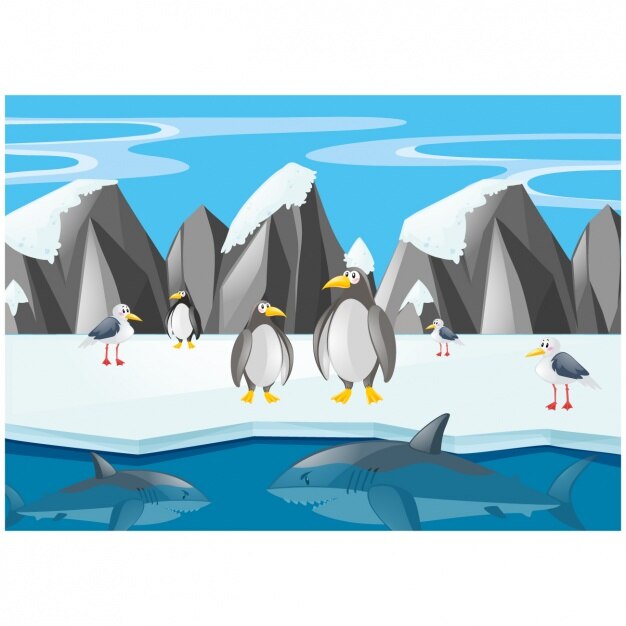Penguin Facts – Discovering the Fascinating World of These Amazing Birds

Penguins are flightless birds that live in the Southern Hemisphere.
Penguins have a streamlined body that helps them swim through water.
The largest species of penguins, the Emperor Penguin, can reach up to 4 feet in height.
Penguins are excellent swimmers and can reach speeds of up to 22 miles per hour.
Penguins have a unique coat of feathers that helps keep them warm in cold climates.
Penguins live in large groups called colonies.
Penguins are known for their distinctive waddling walk.
The diet of penguins mainly consists of fish, krill, and squid.
Penguins have an amazing ability to dive deep into the ocean in search of food.
Penguins use their flippers to communicate and display courtship rituals.
Penguins can stay underwater for several minutes, even up to 20 minutes in some species.
Penguins are highly social animals and form strong bonds within their colonies.
Penguins have a strong sense of hearing and sight, which is crucial for their survival.
Penguins have unique markings on their bellies, which act as a form of identification.
Penguins can recognize their mates and offspring through their distinct vocalizations.
Penguins have a specialized gland that helps them remove excess salt from their bodies.
The Little Penguin is the smallest species, measuring only about 13 inches tall.
Penguins have a lifespan of around 15 to 20 years in the wild.
Penguin Facts – Discovering the Fascinating World of These Amazing Birds part 2
Penguins are monogamous, meaning they form long-term pair bonds with their mates.
Penguins molt their feathers once a year to maintain their waterproofing.
Penguins have a layer of fat called blubber, which helps keep them warm in cold waters.
Penguins are excellent parents and take turns caring for their eggs and chicks.
Penguins have been known to form creches, or nurseries, where groups of chicks are cared for collectively.
The African Penguin is the only species of penguin that is found on the African continent.
Penguins have specific breeding seasons, often coinciding with the availability of food.
Penguins have a keen sense of navigation and can locate their nesting sites even after months at sea.
Penguins are highly adaptable and can survive in a wide range of habitats, from icy Antarctica to temperate regions.
Penguins have a remarkable ability to regulate their body temperature in cold environments.
Penguins use vocalizations, body movements, and displays to communicate with each other.
Penguins have been featured in numerous movies and cartoons, becoming popular iconic characters.
Penguins are often associated with the symbol of love and devotion due to their mating habits.
Penguins have a distinctive black and white coloration, which helps camouflage them from predators while swimming.
Penguins have evolved to have tight, waterproof feathers, which aid in their efficient underwater movement.
Penguins have a unique courtship behavior, involving head bowing, trumpeting, and gift-giving.
Penguins have a highly developed sense of smell, helping them locate their prey in the vast ocean.
Penguins have a specific order when entering the water, making sure their safety is ensured.
Penguins have been known to slingshot themselves out of the water onto icebergs or shorelines.
Penguins have a complex social hierarchy within their colonies, with dominant individuals taking charge.
Penguins have a layer of air trapped within their feathers, providing additional insulation.
Penguins can drink seawater thanks to special glands above their eyes that filter out salt.
Penguins have been heavily impacted by climate change, with melting ice affecting their habitat and food sources.
Penguins participate in dramatic courtship displays, including synchronized swimming and vocal duets.
Penguins have evolved to have an excellent sense of underwater vision, helping them spot prey.
Penguins tend to mate for life, with some pairs staying together until death.
Penguins play a vital role in the ecosystem, as their guano (droppings) fertilizes the surrounding land and supports other species.

